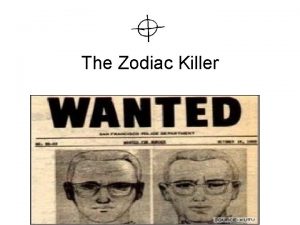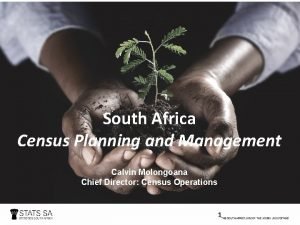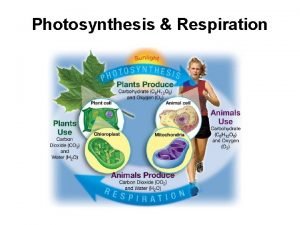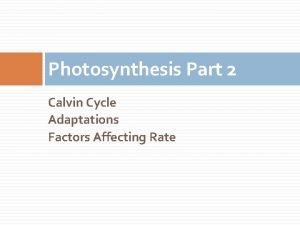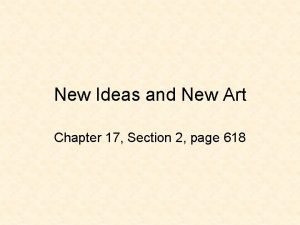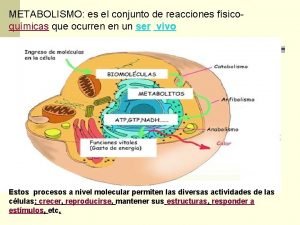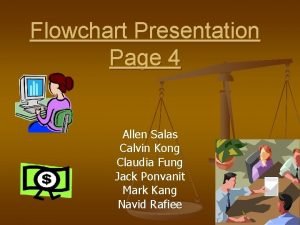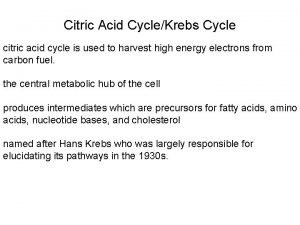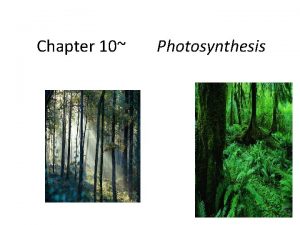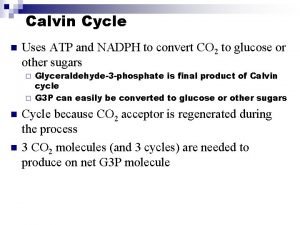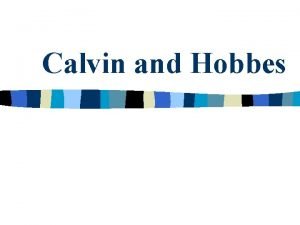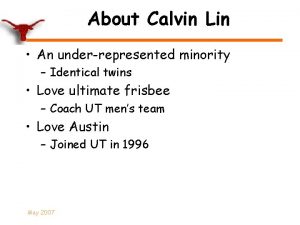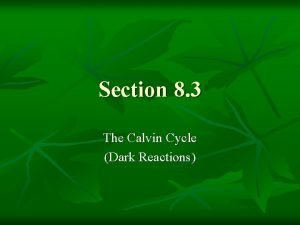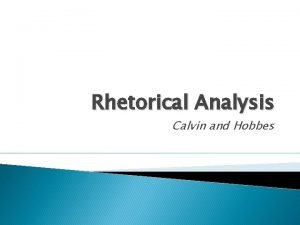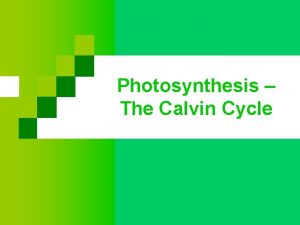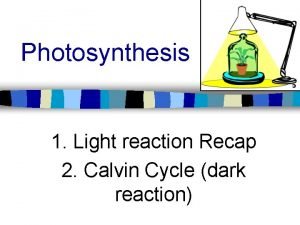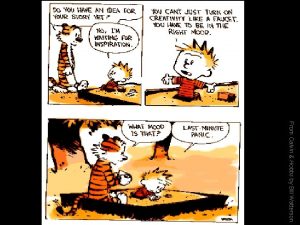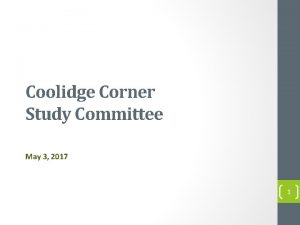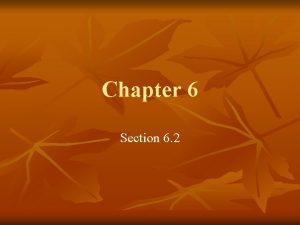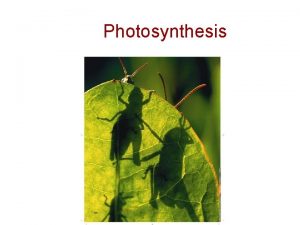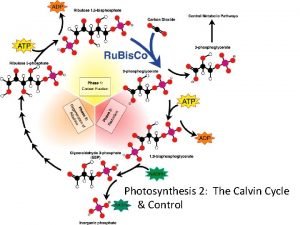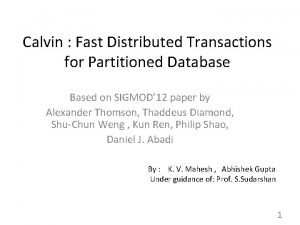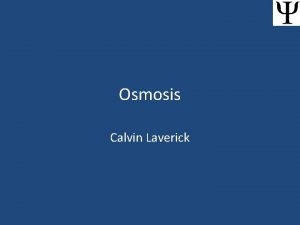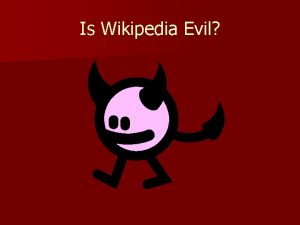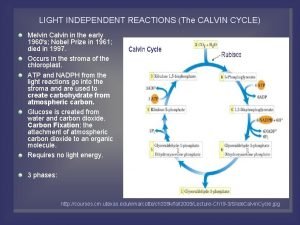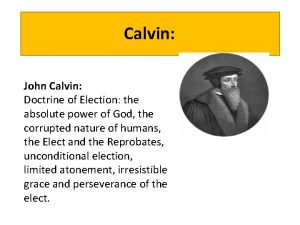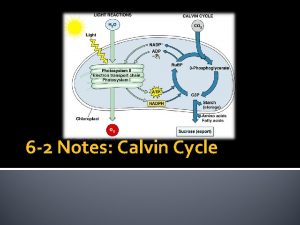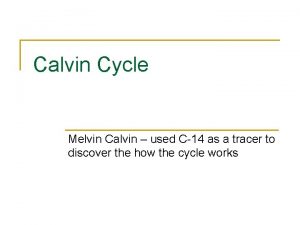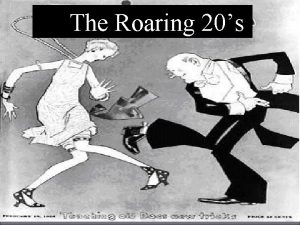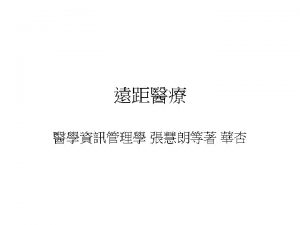Group Dynamics Wikipedia Calvin Laverick Group Dynamics Group




































- Slides: 36

Group Dynamics: Wikipedia Calvin Laverick


Group Dynamics • Group Dynamics are: – A system of: • Behaviours • Psychological Processes

Key Theorists • There are many key theorists as with any sociology or social psychology. I know, how unhelpful. • They can be found here. – I have opted not to put them in this Power. Point as they all wrote detailed studies which would take too much space.

Bruce Tuckman (1965) • Special mention goes to Bruce Tuckman who proposed the 4 stage model of group dynamics. – I mention this because his model is most widely used and accepted of all group dynamics theories. • This can be found here.

Intragroup Dynamics • These are the underlying processes that give rise to a set of norms, relations and common goals that characterize a particular social group. – Or, in English, how a group becomes the type of group it is.

Interdependence Within Groups • Within a group interdependence occurs and often shapes behaviours and attitudes. – This means that people may change how they act depending on others. – This is shown by Asch Conformity experiment.

Groups Within Groups • Groupception. • Group dynamics depend on how one defines the boundaries of a group. – This means that subgroups may or may not be included within the group dynamics. The dynamics of the group would be largely different dependent on the subgroups included.

Group Formation • There are 2 main theories for the formation of groups: – Psychological Theory – Social Cohesion Approach – Social identity approach

Psychological Theory • The theory behind group formation is thought to start with a psychological bond between individuals. – The factors for why this may occur are so broad that it is virtually impossible to get a list of them. As with many things in psychology, it is dependent on the people involved.

Social Cohesion Approach • This is the idea that groups form through interpersonal attraction within 2 or more people.

Social Identity Approach • This approach suggests that a group starts when people perceive that they have a shared social identity. – Examples of this are jobs (such as “nurses”) or lifestyle activities(such as hockey players).

Emergent Groups • An exception to this rule is that of emergent groups. – These can occur when people have no membership roles but still need to coordinate and work together to reach a common goal.

Social Identity Contrived from social identity. • An individuals identity has 2 components: – Personal Identity – Social Identity • Personal identity can be found, in a hidden slide, at the link provided. – This is because it is not vital to this topic.

Social Identity • Defined by a persons group membership. – This includes general stereotypical characteristics of the group. • Social Identity and Personal Identity are needed to be balanced and this can be found in “Optimal Distinctiveness Theory”. – This can be found here.

In-group Bias • When comparing our group with someone else we are much more likely to emphasize, or exaggerate, the positive characteristics of our group. – In this we may also make their characteristics and behaviours seem worse than they really are.

Group Cohesion • This refers to the processes that keep members of a social group connected. – Factors influencing this are morale, attraction and solidarity. • Group Cohesion has been linked to group performance and intergroup conflict.

Black Sheep Effect • This is when individuals in a group upgrade likeable members of the group and try and stay away from unlikeable group members. – This influences an individuals opinion of a group from in-group and out-group (public image).

3 Types Of Members: • New Members: – These people must prove themselves to full members of the group before they are accepted. • Full Members: – These members have undergone socialization and are accepted into the group. • Marginal Members: – These were previously full members but have failed to live up to the groups expectations and so have lost the reputation of full members.

Group Influence On Individual Behaviour • It has been found that individuals work harder and faster when others are present. – This phenomena is known as social facilitation. • Individuals performance is worse when intergroup conflict is present. • Experiments that test the group influence on individual behaviour can be found here.

Intergroup Dynamics • This refers to behavioural psychological relations/ interactions between 2 or more groups. – This can also include within your own group as well as with other groups. – It is sometimes positive but can cause conflict.

Intergroup Conflict • According to social identity theory, seen in an earlier slide, intergroup conflict starts when an individual compares characteristics of their group with other groups. – These are known as the “in-group” (the group the individual belongs to and the “out-group”. – It is likely to be bias against the “out-group” in ways that can be found here.

Discrimination In Society • At this point, it is worth it to note that this is the main contributor to the following in society: – Racism – Sexism – Prejudice – Discrimination

Contact Hypothesis (intergroup contact theory) • Gordon Allport (1954) suggested that promoting contact between groups can reduce prejudice. He suggested 4 optimal conditions for this: – Support of Authorities and Laws – Intergroup Cooperation – Equal status between groups – Common goals

Superordinate Identities • A Superordinate identity is an “umbrella group” that includes in the groups that are in conflict. – An example is this of Latino gangs. Although vicious rivalries are present inter-group they have been known to work together when fighting a common cause such as the law or oppression in society.

Interdependence • Another technique to reduce conflict within groups is to make group members interdependent on the other groups members. – An example of this is giving them a task that causes them to need each others skills and resources to complete.

• The following slides are a brief history of Social Group Dynamics.

A Brief History • “The whole is greater than the sum of it’s parts”. – Quote citation needed. • A social group is an entity which has qualities that cannot be understood by study of individuals.

Max Wertheimer (1924) • “There are entities where the behaviour of the whole cannot be derived from it’s individual elements nor from the way these elements fit together. Rather the opposite is true, the properties of any of the parts are determined by the intrinsic structural laws as a whole. – Wertheimer 1924, p. 7

What does this mean? • The rules of a group influence the behaviour of a group more than an individual can. – These are intrinsic rules and are usually subjective to the group involved.

Wilhelm Wundt (1832 – 1920) • He believed that possessed phenomena could no be described through the study of an individual. – These include human language, customs and religion.

Emile Durkheim (1858 – 1917) • Influenced by Wundt. • Believes public knowledge as a collective phenomena.

Gustave Le Bon (1841 -1931) • Crowds possess a “racial and unconscious” mind. – Believed that this has primitive, aggressive and antisocial instincts.

William Mc. Dougall (1871 -1938) • A group mind which had a distinct existence born from the interaction of individuals.

Kurt Lewin (1890 – 1947) • Coined the term group dynamics. • Established the Group Dynamics Research Center.

Source: • http: //en. wikipedia. org/wiki/Group_dynamics
 Inputs and outputs of calvin cycle
Inputs and outputs of calvin cycle Cecelia ann shepard
Cecelia ann shepard Calvin molongoana
Calvin molongoana Fase independiente de la luz
Fase independiente de la luz Cellular respiration diagram
Cellular respiration diagram Where does the calvin cycle take place
Where does the calvin cycle take place Calvin zyklus
Calvin zyklus John calvin peoples
John calvin peoples Fadph
Fadph Calvin cycle campbell
Calvin cycle campbell Father of bloodstain identification
Father of bloodstain identification Calvin kong
Calvin kong Citric acid cycle input and output
Citric acid cycle input and output Light reactions vs calvin cycle
Light reactions vs calvin cycle Calvin cycle
Calvin cycle Calvin and hobbes science
Calvin and hobbes science Calvin hunsinger
Calvin hunsinger Calvin cylce
Calvin cylce Dr calvin lin
Dr calvin lin Calvin taylor creative thinking model
Calvin taylor creative thinking model Calvin cycle
Calvin cycle Calvin and hobbes analysis
Calvin and hobbes analysis Calvin cycle
Calvin cycle Calvin cycle
Calvin cycle Why was john calvin important to the reformation
Why was john calvin important to the reformation Dr calvin hobbs
Dr calvin hobbs Fotosentez evreleri
Fotosentez evreleri The calvin coolidge corner
The calvin coolidge corner Section 6-2 the calvin cycle
Section 6-2 the calvin cycle Calvin brown iii
Calvin brown iii The calvin cycle section 6-2 review
The calvin cycle section 6-2 review Email skydrive
Email skydrive Main idea of photosynthesis
Main idea of photosynthesis The calvin cycle occurs in the___________.
The calvin cycle occurs in the___________. Calvin cycle
Calvin cycle Ciclo de calvin fase oscura de la fotosintesis
Ciclo de calvin fase oscura de la fotosintesis Calvin algorithm
Calvin algorithm

